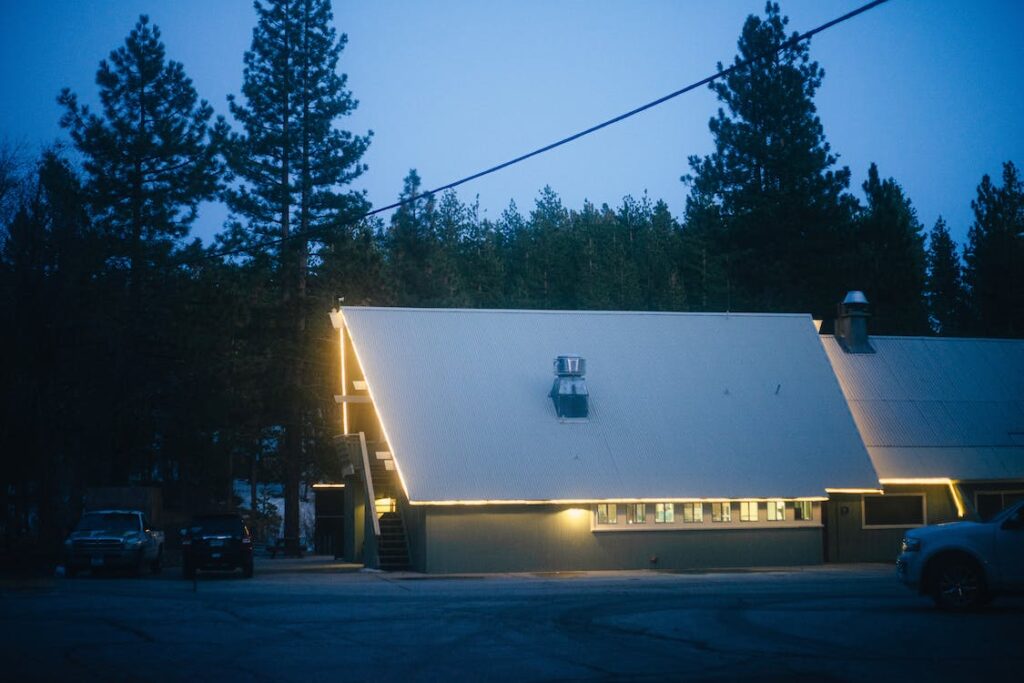Australia, known for its breathtaking landscapes and commitment to environmental conservation, is witnessing a paradigm shift in the realm of homebuilding. As the global consciousness towards sustainable living grows, Australians are increasingly embracing eco-friendly practices in residential construction. In this comprehensive blog post, we’ll delve into the emerging trends in sustainable home building, exploring the innovative approaches and technologies that are shaping the landscape of eco-friendly residences across the continent.
Passive Design and Energy Efficiency
At the forefront of sustainable home building in Australia, there is a discernible and transformative trend that is reshaping the architectural and construction landscape—the pervasive embrace of passive design principles. Architects and builders, attuned to the imperative of environmental stewardship, are increasingly weaving intricate features into the fabric of residential structures that harness and optimise natural resources. The strategic integration of sunlight and wind into the architectural blueprint aims not only to regulate temperature seamlessly but also to curtail the reliance on artificial heating or cooling mechanisms. This holistic approach extends beyond mere energy conservation; it fundamentally alters the way Australians envision and actualize their homes.
Passive design, as a comprehensive strategy, encompasses a spectrum of innovative practices. Architects strategically position windows to maximise natural light, not only illuminating spaces but also reducing the need for artificial lighting during daylight hours. Simultaneously, the use of thermal mass materials—materials that can absorb, store, and release heat—further enhances the passive design paradigm. These materials, strategically placed within the structure, contribute to temperature regulation, optimising the internal climate and reducing the demand for mechanical heating or cooling systems.
Moreover, the implications of passive design transcend energy conservation, permeating the very essence of home living. The incorporation of these principles enhances the overall comfort and livability of homes. Residents find themselves ensconced in spaces that are naturally attuned to the ebb and flow of the surrounding environment, fostering a connection to the outdoors and a sense of harmony within the living space.
In tandem with the ascendancy of passive design, there is a simultaneous surge in the integration of energy-efficient technologies, marking a pivotal shift towards a more sustainable future. Solar panels, once a pioneering technology, are now becoming ubiquitous on rooftops across Australia. This renewable energy source not only reduces the carbon footprint of residential living but also contributes to the generation of clean and sustainable power. The energy revolution extends beyond solar panels to encompass a suite of energy-efficient appliances and smart home systems.
In the realm of sustainable home designs, energy-efficient appliances have become standard, bearing the Energy Star label as a testament to their eco-friendly attributes. Beyond this, the advent of smart home systems is revolutionising the way Australians interact with their living spaces. These intelligent systems, equipped with sensors and connectivity features, monitor and manage energy usage in real-time. Homeowners can exercise precise control over lighting, heating, and cooling systems, optimising energy consumption based on individual preferences and daily patterns.
The integration of such technologies goes beyond environmental benefits; it aligns with the financial well-being of homeowners. The initial investment in solar panels and energy-efficient appliances yields long-term cost savings, as homeowners witness a tangible reduction in utility bills. This economic incentive further propels the adoption of sustainable technologies, creating a symbiotic relationship between environmental consciousness and financial prudence.
Water Conservation and Harvesting
Water scarcity is a concern in various regions of Australia, making water conservation a critical aspect of sustainable homebuilding. The trend towards eco-friendly residences includes the implementation of water-efficient fixtures, rainwater harvesting systems, and greywater recycling. These features not only reduce the strain on local water supplies but also offer homeowners a degree of self-sufficiency in water management.
Innovative technologies, such as permeable paving and drought-resistant landscaping, are also gaining traction. These approaches minimise water runoff and enhance the absorption of rainwater into the ground, contributing to a more sustainable approach to landscaping in residential areas.

Sustainable Materials and Construction Practices
A fundamental shift towards sustainable materials is reshaping the construction industry in Australia. Builders are increasingly turning to materials that have a lower environmental impact, such as recycled steel, bamboo, and reclaimed timber. Additionally, the use of low-impact construction methods, like modular construction and prefabrication, is on the rise. These approaches not only reduce construction waste but also expedite the building process, leading to more efficient and eco-friendly homebuilding.
Moreover, the concept of “embodied energy” is gaining prominence. This refers to the total energy required to produce, transport, and assemble building materials. Homebuilders are now considering the life cycle of materials, opting for those with lower embodied energy to minimise the environmental footprint of construction projects.
Green Roofs and Sustainable Landscaping
Australia’s sustainable home building trends extend beyond the four walls, reaching the very roof over our heads. Green roofs, adorned with vegetation, not only provide insulation but also contribute to improved air quality and biodiversity. This innovative approach not only enhances the aesthetic appeal of homes but also aligns with the broader goal of integrating nature into urban and suburban environments.
In tandem with green roofs, sustainable landscaping practices are gaining momentum. Native plantings that require less water, permeable surfaces to reduce runoff, and the integration of edible gardens are becoming integral components of eco-friendly residences. These features not only contribute to the overall sustainability of the property but also create harmonious living spaces that connect occupants with nature.
Smart Home Integration for Sustainability
As we navigate the ever-evolving landscape of sustainable living in Australia, the advent of the smart home era emerges as a transformative force, ushering in not merely a wave but a veritable tidal shift in the possibilities for environmentally conscious living. Australians, recognizing the symbiosis between technological innovation and sustainability, are increasingly and enthusiastically embracing a myriad of smart home technologies that transcend the conventional boundaries of residential living. These cutting-edge innovations extend far beyond the superficial allure of automation; they are instrumental in enhancing energy efficiency, optimising resource usage, and endowing homeowners with unprecedented insights into their environmental footprint.
At the heart of this technological revolution are smart thermostats that transcend mere temperature control. These intelligent devices go beyond the basics, learning and adapting to user preferences over time. By assimilating user habits, occupancy patterns, and external environmental factors, smart thermostats optimise heating and cooling systems, ensuring energy consumption aligns seamlessly with the dynamic needs of the household. This not only results in tangible energy savings but also exemplifies a responsive and forward-thinking approach to sustainable homebuilding.
Complementing the smart thermostat revolution are automated lighting systems that transcend the conventional notions of illumination. These systems, equipped with sensors and advanced controls, are designed to minimise energy wastage by adjusting lighting levels based on occupancy and ambient light conditions. The result is a nuanced orchestration of lighting that not only enhances energy efficiency but also creates living spaces that are dynamically responsive to the needs and preferences of inhabitants.
However, the true frontier of sustainable living lies in the integration of artificial intelligence (AI) and machine learning into smart home systems. This sophisticated layer of technology empowers homeowners to transition from passive consumers of energy data to active participants in shaping their environmental impact. AI algorithms analyse patterns in energy consumption, identifying inefficiencies and offering tailored suggestions for further optimising resource usage.
For instance, machine learning algorithms can discern patterns in daily routines, predicting when occupants are likely to be away and adjusting heating or cooling systems accordingly. Furthermore, these systems can provide real-time feedback on energy consumption, offering actionable insights into areas where further efficiencies can be achieved. This dynamic and responsive approach to sustainable living transcends the traditional realm of automation, transforming smart homes into intelligent ecosystems that evolve in tandem with the preferences and lifestyles of their inhabitants.
The implications of these advancements are not confined to the immediate convenience of homeowners; they extend to the broader landscape of sustainability. By empowering individuals to make data-driven decisions about their energy consumption, smart home systems become catalysts for a cultural shift towards more conscientious resource usage. The integration of AI and machine learning aligns seamlessly with the ethos of sustainable homebuilding, creating a living environment that not only adapts to individual needs but actively contributes to the collective goal of environmental conservation.
Certification and Recognition
Australians are becoming more discerning in their choice of homes, seeking properties that adhere to recognized sustainability standards. Green building certifications, such as Green Star and NatHERS (National Home Energy Rating Scheme), are gaining prominence. These certifications not only validate a home’s commitment to sustainability but also provide homeowners with tangible benefits, such as reduced utility costs and enhanced resale value.
Additionally, local councils and governments are incentivizing sustainable home building through grants and rebates. This recognition and support are encouraging more homeowners and builders to invest in eco-friendly practices, further propelling the sustainability movement in the Australian housing market.
The trends in sustainable home building in Australia represent a collective shift towards a more environmentally conscious and future-oriented approach to residential construction. From passive design principles to the integration of smart technologies and the use of sustainable materials, Australians are redefining the blueprint for homes that not only meet the needs of the present but also safeguard the future of our planet. As these trends continue to evolve, sustainable living is poised to become not just a preference but a fundamental aspect of the Australian way of life, creating homes that harmonise with nature and contribute to a resilient and eco-friendly future.
If you are interested in construction courses, please enquire now.
